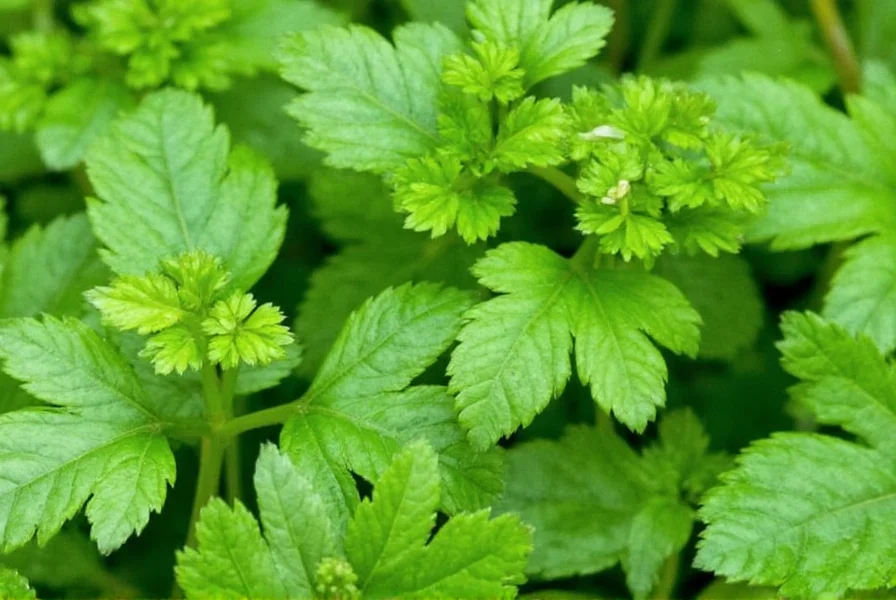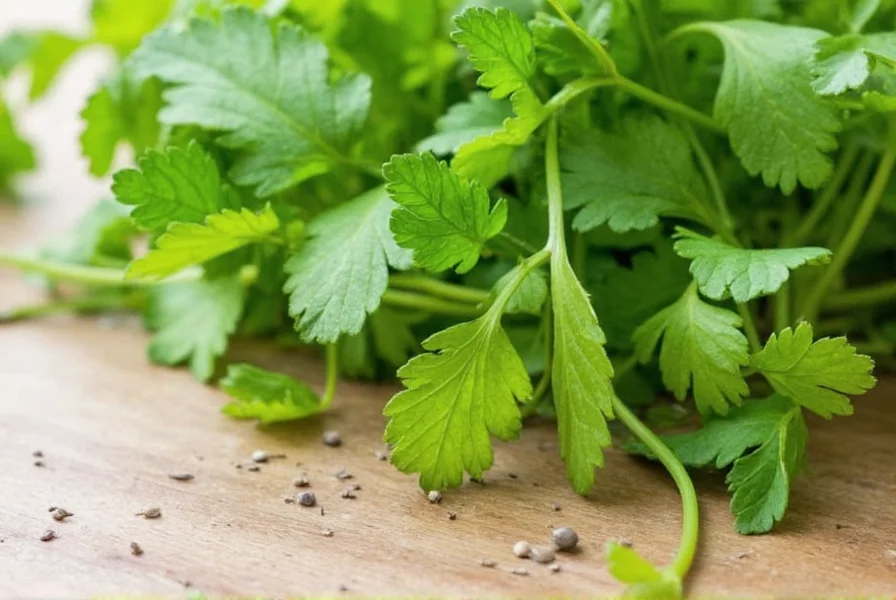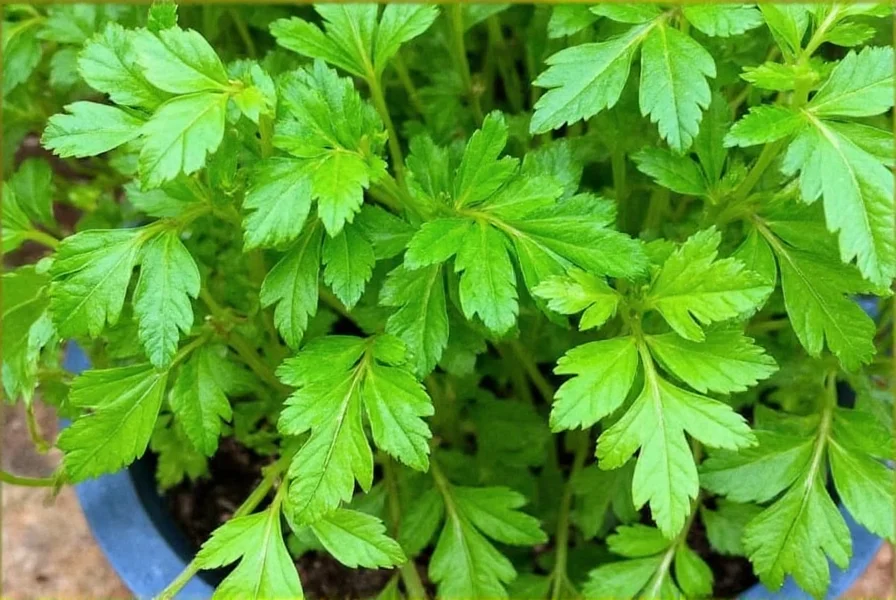Many gardeners wonder about the relationship between coriander seeds and cilantro, often thinking they're different plants. The truth is simple: coriander seeds grow cilantro because they're parts of the same plant at different life stages. Understanding this connection is essential for successful cultivation.
Botanical Relationship Explained
The Coriandrum sativum plant produces what we call cilantro (the fresh green leaves) during its vegetative growth stage. As the plant matures and flowers, it develops seeds that we harvest as coriander seeds. This explains why growing cilantro from coriander seeds works perfectly—because you're planting the very seeds that produce the cilantro plant.
Terminology Confusion: Cilantro vs. Coriander
The terminology varies by region, causing much confusion:
| Region | Leaves | Seeds |
|---|---|---|
| United States | Cilantro | Coriander seeds |
| United Kingdom, India, Australia | Coriander | Coriander seeds |
| Botanical name | Coriandrum sativum foliage | Coriandrum sativum seeds |
This regional terminology difference explains why many people mistakenly believe cilantro and coriander are different plants. When you plant coriander seeds to grow cilantro, you're simply growing the complete life cycle of Coriandrum sativum.
Step-by-Step Guide to Growing Cilantro from Coriander Seeds
Successfully growing cilantro from coriander seeds requires understanding the plant's specific needs. Follow these steps for optimal results:
1. Seed Selection and Preparation
Choose fresh, plump coriander seeds for the highest germination rate. Older seeds may have reduced viability. For best results when you plant coriander seeds to grow cilantro, soak them in water for 24-48 hours before planting to soften the hard outer shell.
2. Optimal Planting Conditions
Cilantro grows best in well-draining soil with a pH between 6.2 and 6.8. Plant seeds ¼ inch deep, spacing them 2-4 inches apart. The ideal temperature range for growing cilantro from coriander seeds is 50-85°F (10-29°C).
3. Sunlight Requirements
Cilantro prefers full sun but appreciates partial shade in hotter climates. In regions with intense summer heat, provide afternoon shade to prevent premature bolting. When you plant coriander seeds to grow cilantro in hot weather, the plants may bolt quickly to seed production.
4. Watering Schedule
Keep soil consistently moist but not waterlogged. Water when the top inch of soil feels dry. Overwatering causes root rot, while underwatering stresses the plant, triggering early flowering. Consistent moisture is crucial for growing cilantro from coriander seeds without premature bolting.
5. Harvesting Timeline
You can begin harvesting cilantro leaves 3-4 weeks after planting, once the plant reaches 6 inches in height. For continuous harvest, cut outer leaves first, allowing the center to keep growing. Remember that when you plant coriander seeds to grow cilantro, the leaves have the best flavor before the plant flowers.

Common Challenges in Growing Cilantro from Coriander Seeds
Many gardeners face difficulties with cilantro cultivation. Understanding these challenges helps ensure success when you plant coriander seeds to grow cilantro.
Premature Bolting
Cilantro is notorious for bolting (going to seed) quickly in warm weather. To delay bolting when growing cilantro from coriander seeds:
- Plant in cool seasons (spring or fall)
- Provide partial shade during hottest parts of the day
- Choose slow-bolting varieties like 'Santo' or 'Calypso'
- Succession plant every 2-3 weeks for continuous harvest
Short Harvest Window
The prime leaf production period lasts only 4-6 weeks before flowering begins. To extend your harvest when you plant coriander seeds to grow cilantro, consider these strategies:
- Grow in partial shade to slow the growth cycle
- Regularly pinch off flower buds as they appear
- Plant in containers that can be moved to cooler locations
- Use the "cut-and-come-again" method for harvesting
From Cilantro to Coriander: Completing the Life Cycle
When your cilantro plant flowers (typically white or pale pink umbels), it's beginning its transition to seed production. If you allow the flowers to mature, they'll develop into the coriander seeds you started with. This explains the complete cycle of coriander seeds grow cilantro which then produces more coriander seeds.
For seed harvesting, wait until the seed heads turn brown but before they fully dry and shatter. Cut the entire seed head and place it in a paper bag to finish drying. The seeds will naturally fall into the bag as they dry completely.

Maximizing Your Cilantro Harvest
To get the most from your growing cilantro from coriander seeds experience:
- Plant in succession every 2-3 weeks for continuous fresh leaves
- Use organic mulch to maintain consistent soil moisture
- Fertilize lightly with balanced organic fertilizer every 4-6 weeks
- Harvest in the morning when essential oils are most concentrated
- Freeze excess leaves in ice cube trays with water for later use
Conclusion
The relationship between coriander seeds and cilantro is beautifully simple: coriander seeds grow cilantro because they're different stages of the same plant. Understanding this connection transforms your gardening approach, allowing you to successfully cultivate fresh cilantro while potentially harvesting your own coriander seeds for future planting or culinary use. Whether you're planting coriander seeds to grow cilantro for immediate harvest or to complete the plant's life cycle, this knowledge ensures gardening success with this versatile herb.
Frequently Asked Questions
Can I use grocery store coriander seeds to grow cilantro?
Yes, you can typically use grocery store coriander seeds to grow cilantro, though germination rates may vary. Commercially sold seeds are often older and may have been treated with anti-fungal agents that could affect germination. For best results when you plant coriander seeds to grow cilantro, use fresh seeds specifically sold for gardening, as they'll have higher viability and haven't been processed for consumption.
How long does it take for coriander seeds to grow cilantro?
Coriander seeds typically germinate in 7-14 days when planted under optimal conditions. You can begin harvesting cilantro leaves approximately 3-4 weeks after planting, once the plant reaches 6 inches in height. The complete cycle from coriander seeds grow cilantro to mature plant ready for seed production takes about 45-70 days, depending on growing conditions and climate.
Why does my cilantro plant keep dying after I plant coriander seeds?
Cilantro often dies prematurely due to bolting (going to seed) in warm weather, which is common when growing cilantro from coriander seeds. Other causes include overwatering leading to root rot, insufficient sunlight, or poor soil drainage. Cilantro prefers cooler temperatures and will naturally complete its life cycle quickly in heat. To prevent premature death, plant in cool seasons, provide partial shade in hot climates, and maintain consistent moisture without waterlogging the soil.
Can I grow cilantro indoors using coriander seeds?
Yes, you can successfully grow cilantro indoors from coriander seeds. Choose a container with good drainage, use quality potting mix, and place in a south-facing window or under grow lights for 6-8 hours daily. Maintain temperatures between 60-75°F (15-24°C) and keep soil consistently moist. Indoor growing helps control conditions and can prevent premature bolting, making growing cilantro from coriander seeds more successful year-round. Just ensure adequate light to prevent leggy growth.











 浙公网安备
33010002000092号
浙公网安备
33010002000092号 浙B2-20120091-4
浙B2-20120091-4